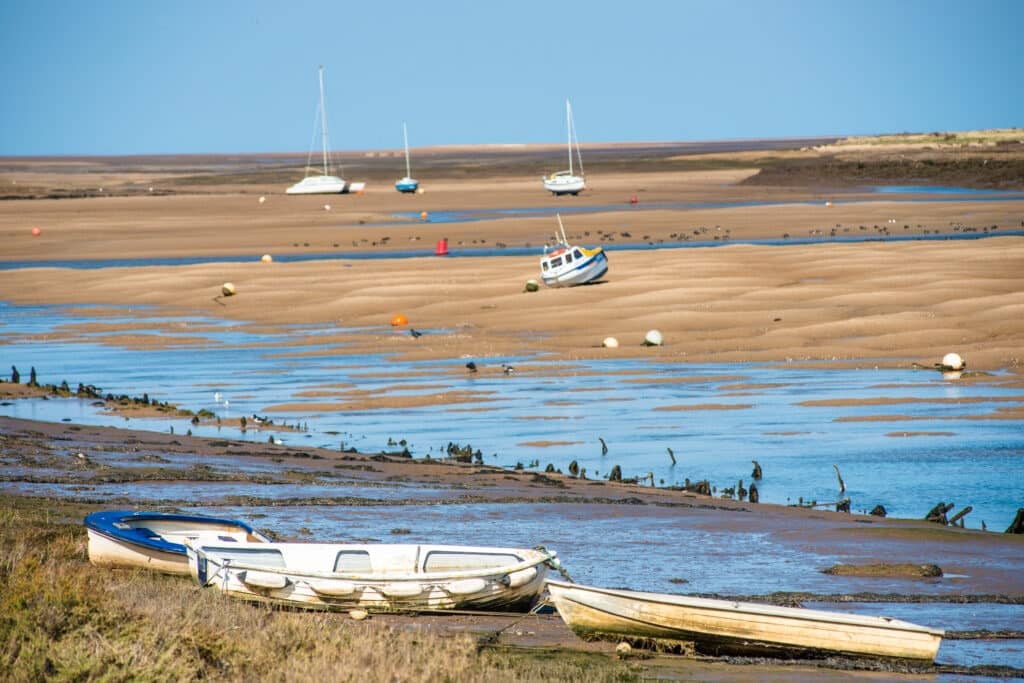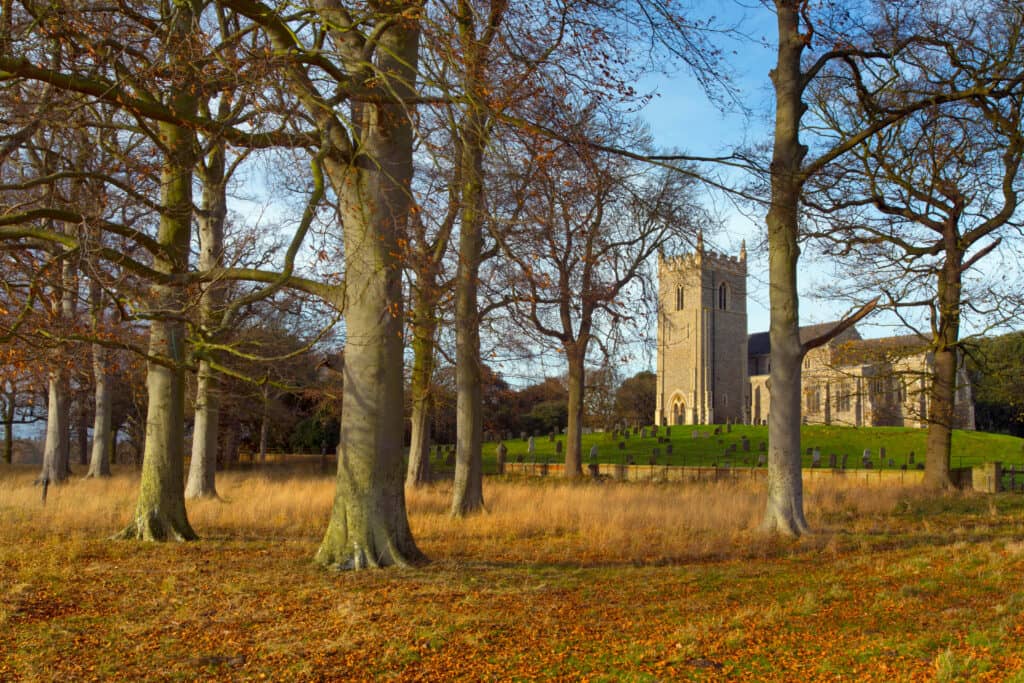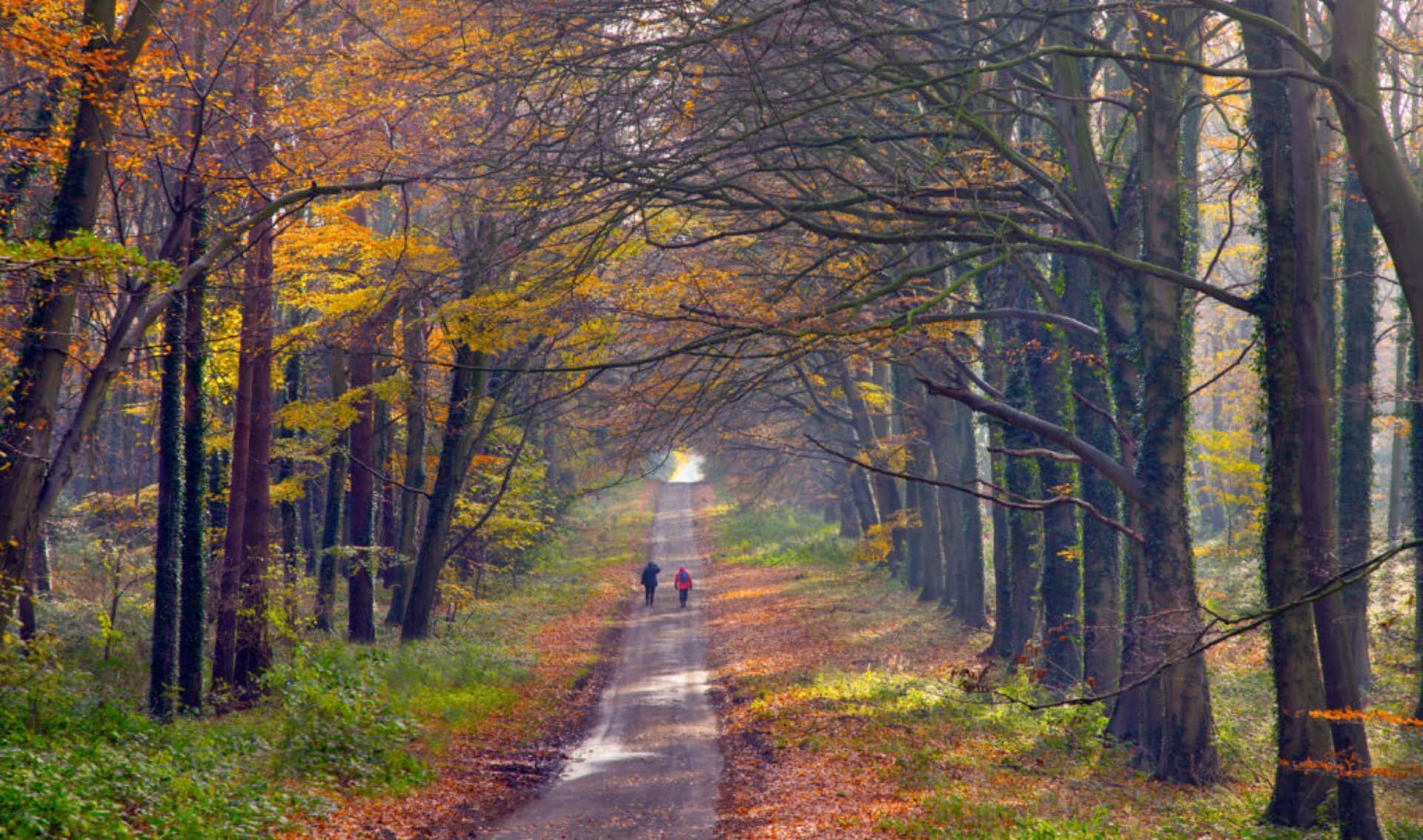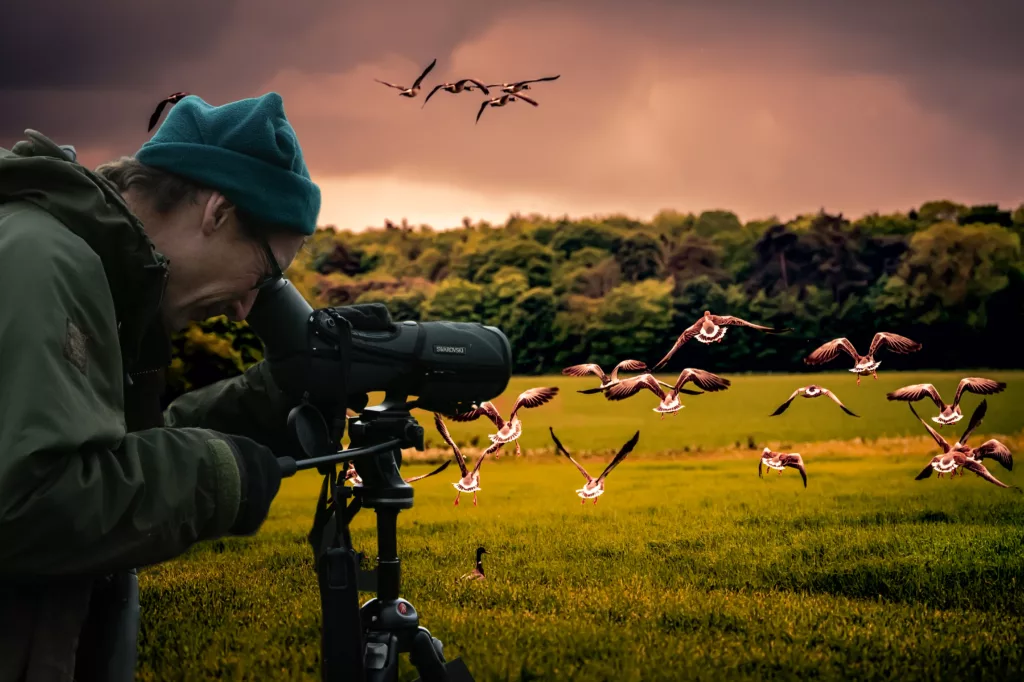
Dawn Flight
It’s bitterly cold. Yet January is an excellent time to head outside and witness one of Britain’s most magnificent dawn experiences. Huddle in the shelter of sand dunes or a Wells beach hut. And wait.
Light glimmers in the east. Day is breaking and with it, an awakening. Ragged cries spike the dark silence. Slowly, quietly it begins. Excitement mounts in rousing crescendos, spreading among thousands of wildfowl, restless on the cold mud.
And then they rise. A wild chorus fills the air, elemental and unrelenting. Thousands of pink footed geese lift almost as one continuous wave of breathtaking joy. Great skeins make V patterns overhead, calling all the while, formations shaping the fading dark. Over the watchers they fly inland, hungry from their night fast, searching for sugar beet tops in newly harvested fields.
In the not too distant past, wildfowlers lined up here, guns loaded to shoot the birds down. Professional wildfowling guides were a cutthroat bunch, guarding their secret shooting locations well. Around this time, Sir Peter Scott, son of the polar explorer Robert Falcon Scott, wrote his book Morning Flight, describing being here as a pilgrimage. His love of such glorious natural spectacle surely informed his work as a conservationist. He established the Wildfowl and Wetlands Trust (WWT) in 1946 and later co-founded the World Wildlife Fund.
And so, morning has come and the geese are off to find breakfast. Time you head back to the warmth of Wells and do the same!

Holkham Park
The rising of the sun and the running of the deer…the idyllic landscape of Holkham and its magnificent Hall is a quintessential 18th century vision of England. Blending natural land with cultivated garden, the rolling green vistas were designed by William Kent, whose principle was ‘nature abhors a straight line’. Drawing from Nero’s Golden Palace in Rome, Ancient Greece and Egypt, the grounds and house express classical Palladian influences, with restrained architecture surrounded by parkland of grass meadows and woods, similar to a medieval deer park. Park making was all the rage in the 18th century, with new ones appearing all over the country, often incorporating a folly, temple, ilex grove, archway, tumbling stream or lake sparkling in the distance, particularly popular in Norfolk where over one hundred landscape parks were shown on Faden’s map of 1797.
Enter the gates and instead of heading along the single-track road towards the Hall, try turning left. Follow the path along the edge of the park, through woods of oak, horse chestnut and beech, framing the Holkham Hall like a landscape painting. You may come across fallow deer, lifting their dark eyes to meet your gaze, or green woodpeckers rattling out a laughing call. If you look very carefully, you might spot a tree creeper, climbing mouse-like up vertical tree boughs.
When evening light slants low through the trees, head for the Victoria Inn’s warmth and settle in for fine food, red wine and a long winter night.

The Great Improvers
There are some fabulous walks in West Norfolk. But once these rolling fields were very different. An open heathland of heather and gorse stretched from King’s Lynn to Holkham, considered a ‘waste’, good for little but rabbits and sheep. Pubs named ‘The Woolpack’ or ‘The Lamb’ recall the ancient the wool trade, but that was before the 18th and 19th centuries, when Norfolk became the wellspring of the Agricultural Revolution.
Gentlemen farmers like Charles ‘Turnip’ Townshend, the Walpoles at Houghton and Thomas Coke, 1st Earl of Leicester, at Holkham, innovated what’s now known as the Norfolk four-course system of crop rotation. It greatly increased yields by allowing the land to rest, improving soil fertility instead of exhausting it by repetitive planting of the same crop. They also experimented with sheep and cattle, breeding massive animals for size and weight. Norfolk’s heathlands were (controversially) enclosed and transformed into productive farmland by marling, ploughing, fencing and building new model farms to reduce waste. Back then it was all about feeding the nation; today good soil care is part of tackling climate change.
And Holkham Estate is again setting the pace, proving profitable food production goes hand in hand with successful wildlife conservation. Tom Coke, the 8th Earl, is as passionate as his ancestor, part of a new generation of Improvers, with environmental stewardship and regenerative farming to the fore. Find out more in the beautifully written memoir ‘Land Healer’ by Jake Fiennes, conservation manager at Great Farm on the Holkham Estate.

Return of the Geese
The sight of pink foot geese taking flight at dawn is one of nature’s most magnificent winter spectacles. But if prising yourself from bed on a frosty morning is just too painful, you can still witness the geese returning to their roosting grounds as the light fades to dusk. Numbers have been increasing over the last 50 years, with upwards of 100,000 now wintering in Norfolk.
During the day the geese are scattered across the Norfolk fields, shy and hard to spot, moving in grey clusters over the muddy land where they grub for sugar beet tops, searching for root crops rich in carbohydrates. But at the end of an autumn or winter afternoon, try waiting on Lady Anne’s Drive at Holkham. Watch the landward horizon, for this is where they’ll appear. Listen for their calls, piercing the leaden sky until a faint V-shaped skein comes into view. Keep your eyes on it until you see a multitude, fluctuating as formations take turns to lead the flocks.
The skies grow loud and shapes become sharper as they close the distance towards you, arriving in waves. The air is alive with noise, a rowdy hubbub of gathering geese. It’s a little like a starling murmuration, except these birds are almost as big as swans. Then they drop onto the marsh, hoards from the Icelandic Highlands plunging in wheeling spirals. They land. And suddenly it’s silent. You’ve witnessed something truly extraordinary. Now…time to find a nice warm pub!
Build your own itinerary
If you fancy creating your own itinerary for a day trip to Norfolk or a longer visit, it couldn’t be simpler. Just go to Search Activities and select from our wide range of free and paid-for experiences, saving any that capture your imagination with the click of a button.
Once you’ve finished, you’ll find all the information stored in My Favourite, where you can drag and drop activities to create your own day-by-day itinerary! You can download this to a calendar and even share it with friends.
